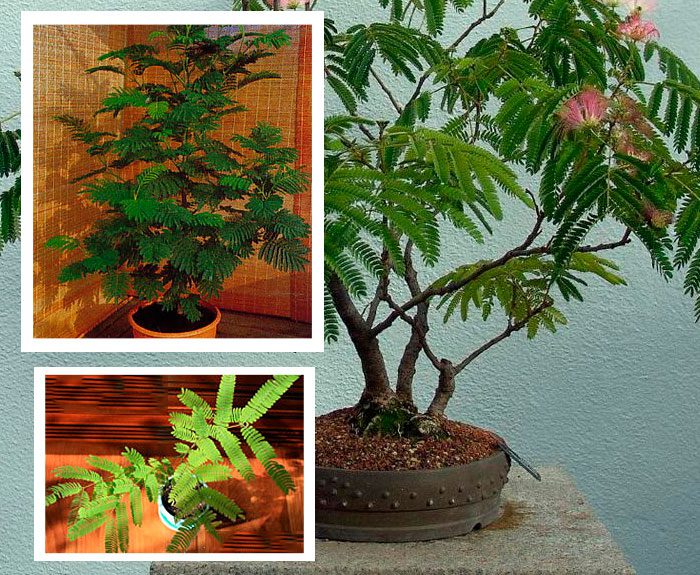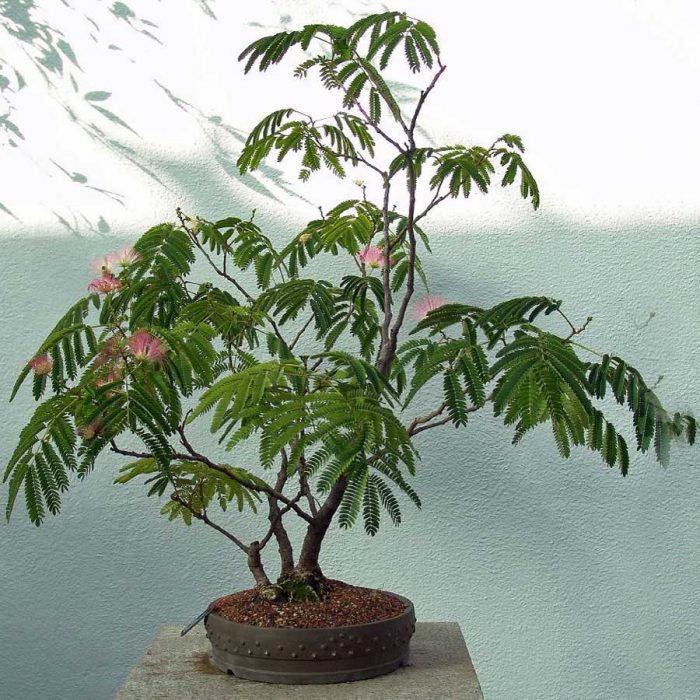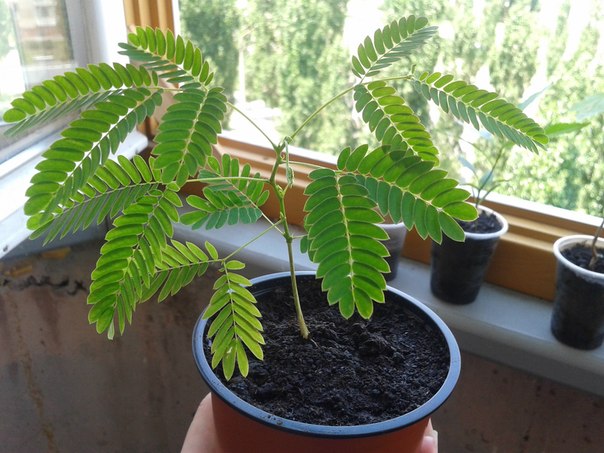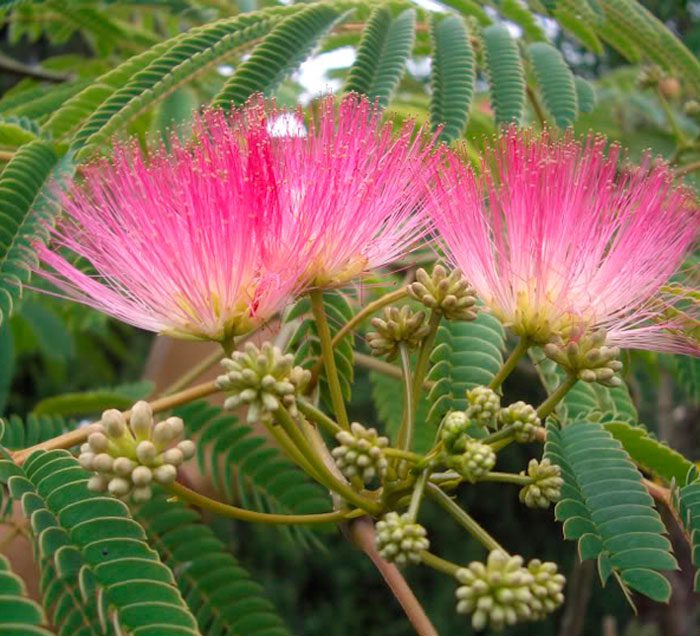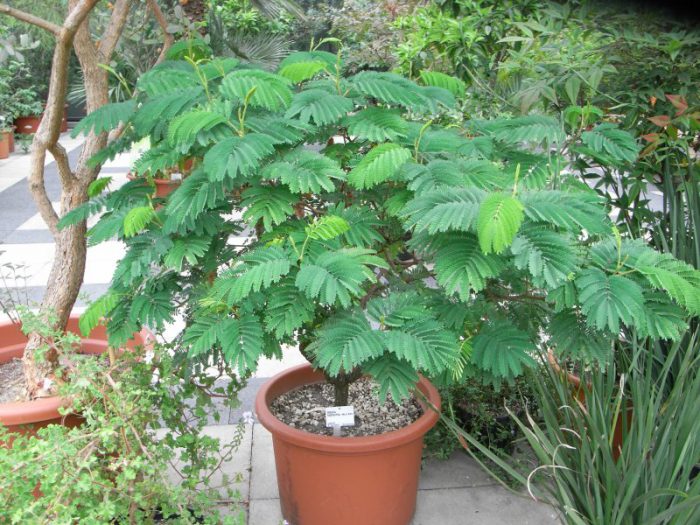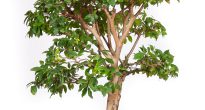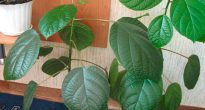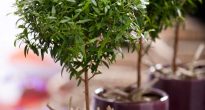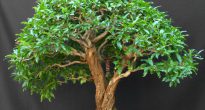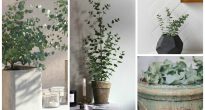A plant like albicia (Albizia), which is directly related to the Mimosaceae family, is represented by deciduous shrubs and trees. They can be found in nature in tropical countries, and also partly in the subtropics. Most common in Africa and Australia. This genus was named after the naturalist Philippe Albizzi, who lived in the 18th century. It was this man who first brought Albizia to Ferenc from Constantinople. In this regard, this plant is also called "Constantinople acacia".
The height of these deciduous shrubs can range from 6 to 8 meters. The leaves are pinnate, pink inflorescences capitate or spike-shaped, and they are outwardly similar to acacia.
Content
Albicia care at home
Illumination
Loves light very much. Needs good lighting, but requires shading from direct sunlight. In winter, you should choose the most illuminated place for the plant, and in summer, try to prevent direct sunlight from falling on its foliage.
Temperature regime
In spring and summer, such a deciduous plant needs a moderate temperature regime (about 20-25 degrees). If possible, move albition to fresh air during the warm season. But it should be remembered that a suitable place must be protected from the direct scorching rays of the midday sun. In winter, the plant must be rearranged in a well-lit cool (from 8 to 10 degrees) place. During this period, make sure that the room is no colder than 5 degrees.
This plant does not belong to frost-resistant crops. Before the beginning of winter, all the foliage flies around him.
Humidity
Albitsia grows normally and develops at low air humidity. Does not need to wet the foliage from the sprayer.
How to water
In spring and summer, watering should be abundant. So, it is produced after the top layer of the soil dries up. In winter, water should be done moderately and very carefully (especially during cold wintering) in order to prevent overflow or overdrying of the substrate. Watered with exceptionally soft, well-settled water at room temperature.
Top dressing
Top dressing is carried out in the spring-summer period 1 time in 2 or 3 weeks. For this, a complex fertilizer for ornamental deciduous plants is used.
Transplant features
The transplant is carried out in the spring. Young specimens should be transplanted once a year, and adults - 1 time in 2 or 3 years.To prepare the soil mixture, combine peat and light turf soil with sand in a ratio of 2: 3: 1. Do not forget to make a good drainage layer at the bottom of the container. Albitsia is a fast-growing plant, and therefore a rather large and high container is needed for planting.
Reproduction methods
Can be propagated by cuttings and seeds.
Before sowing, the seeds must be placed in lukewarm water for two days. After they swell, they need to be sown in a mixture of peat and sand. They only need to be buried a little in the soil. It is necessary to maintain the temperature at 20 degrees, the soil should be slightly damp all the time. High humidity should also be maintained. The first seedlings usually appear several months after sowing.
At the beginning of the summer period, it is recommended to cut semi-lignified cuttings from the lateral stems (this year's branch with a heel). Their length can vary from 10 to 15 centimeters. For planting, a substrate is used, consisting of sand and peat, taken in equal proportions. Move the cutting to a protected, cool (about 16 degrees) place. When rooting occurs, the plants must be planted in separate containers filled with the same substrate.
Diseases and pests
Spider mite appears at extremely low air humidity.
Due to violations of the rules of care, the plant may become ill, for example, spotting appears, etc.
Possible difficulties
- Dying off of buds - the soil in the pot is very dry.
- Wilting foliage - overflow or overdrying of the substrate, excessively heavy soil.
- The foliage becomes faded - poor lighting.
- The tips of the leaves dry out and turn brown - poor watering or excessively low air humidity.
- Dark spots have formed on the foliage - draft or exposure to cold air.
Main types
Albizia silk (Albizia julibrissin)
Such a deciduous tree can reach a height of 10 to 15 meters, and a diameter of no more than 30 centimeters. The trunk is straight, and the crown has an umbrella-shaped shape. The length of alternate double-pinnate leaves can vary from 18 to 20 centimeters. They consist of asymmetric leaves of an oblong-crescent shape, the front surface is painted in a dark green color, and the back has a light white tint. The corolla of the flowers is not pronounced, but there are a large number of rather long stamens. Flowers are part of spike-shaped or capitate inflorescences. The fruit is a multi-seeded, flat, straight pod that can be on the tree for a long time. This plant has a spectacular appearance and is very popular with flower growers. In winter, there is a pronounced rest period.
Beam-flowered albicia (Albizia lophantha)
On the surface of the stems of such deciduous shrubs is pubescence. Double-feathery leaves in the first order have from 8 to 10 pairs of leaflets, and in the second - from 20 to 40 pairs of linear-shaped leaflets. The leaves are bare or there is pubescence on their seamy surface. Spike-shaped cylindrical inflorescences reach 5 centimeters in length and consist of yellowish flowers. Flowering is observed from March to May.

